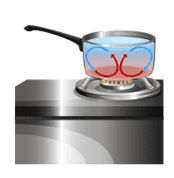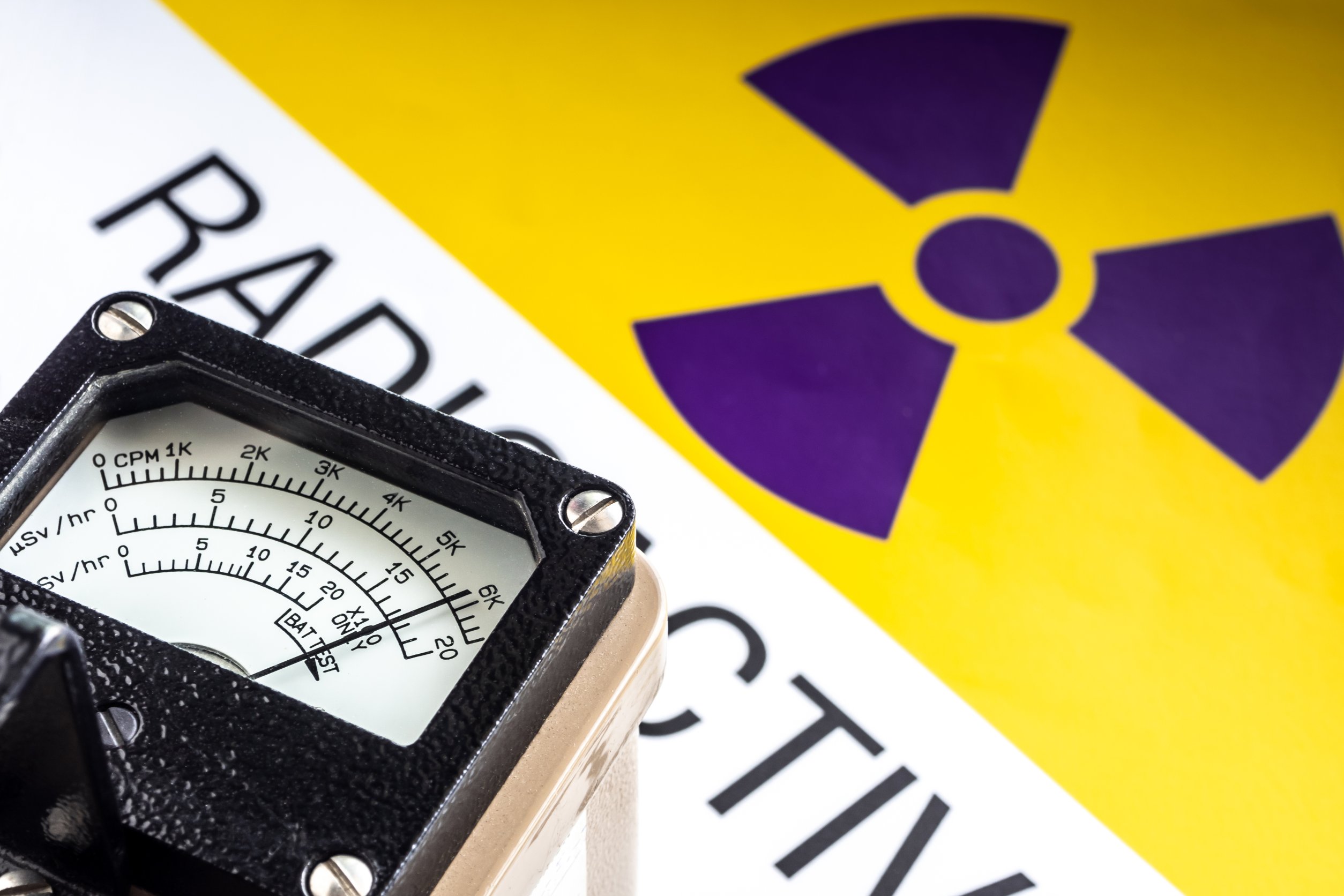In this post
When there is a difference in temperature between two objects or an object and its surroundings, a transfer of thermal energy will occur between the two. Thermal energy is always transferred from an area of high thermal energy (where the temperature is higher), to an area of low thermal energy (where the temperature is lower).
For example, a hot drink will cool down as the heat energy is transferred from the hot fluid to the surrounding air. A cold drink will warm up as the heat energy is transferred from the surrounding warmer air to the cooler liquid.
This transfer of thermal energy can take place using one or more of three different methods – conduction, convection or radiation. The method used depends upon the type of materials between which the energy is being transferred.
Heat energy transfer through conduction
Conduction occurs mainly between solids. The heat energy is transferred from the thermal energy store of the hot solid object to the thermal energy store of a cooler solid object causing its temperature to increase.
Conduction occurs in solids as this method of heat energy transfer relies on the particles touching each other. When thermal energy is provided, the particles in the solid start to vibrate as the energy is converted into kinetic energy. The vibrating particles transfer the kinetic energy to their neighbouring particles causing them to also vibrate. These vibrations are passed through all of the particles in the object causing the object to heat up.
The effect of conduction can be demonstrated using cooking utensils. If a metal spoon is placed in or over a source of heat, the thermal energy from the heat source is transferred to the particles in the metal spoon. The metal spoon heats up as heat energy is transferred along the metal through conduction. Metals are very effective thermal conductors which means that the heat energy is transferred very quickly. This is due to the presence of the delocalised electrons in the metallic structure which can move and transfer the energy throughout the metal very quickly. If you held onto the end of the metal spoon whilst it was placed near the heat source, your fingers would get burned. Many of the cooking utensils used are only partly made of metal but their handles tend to be rubber or plastic. Rubber and plastic are both poor conductors of heat energy. Using these materials for the handles of the utensils allows us to use the utensils without being burned.
Convection
Convection is used to transfer thermal energy from hot areas to cooler areas in fluids such as liquids and gases.

Unlike the particles in solids, those in liquids and gases are free to move. When thermal energy is provided by heating up the liquid or gas, the particles move. The more thermal energy is provided, the more energy the particles in the fluid have and the faster they can move. The particles with a high amount of heat energy can move through the fluid and take the place of the particles with less heat energy. This results in the transfer of heat energy from hot to colder areas in the fluid.
As the particles are moving faster, the gaps between them increases and the density of that area of the fluid decreases. The particles with less thermal energy do not move as quickly and are closer together. The density of the areas with the particles of lower energy is greater.
The particles in the less dense fluid are able to rise up through the fluid into the colder area and the particles in the higher density colder area sink down through the fluid to the warmer area.
The particles at the bottom of the fluid are heated up and spread out again. This area becomes less dense and rises up again through the fluid. Once the higher energy particles have reached the top of the fluid they transfer their energy to the liquid in the form of thermal energy and their movement slows down. They become closer and their density increases. They drop back down to the bottom of the fluid again to the warmer area.
This continual movement of particles from hot to cold areas is known as a convection current. This process continues until the temperature is the same throughout the fluid.
Convection can be used to explain why your cup of tea cools down, why the tectonic plates of the Earth continually move and why a single convection heater is able to heat up a whole room.
When your cup of tea is hot, the thermal energy can be transferred to the particles in the air just above it. These particles rise and take the place of cooler particles which fall down towards the cup of tea. More heat energy is then transferred from the hot drink to the air particles which then rise and replace the particles with less energy. This process can continue as long as there is still energy remaining in the thermal store of the hot drink. This transfer of energy from the thermal store of the hot drink to the thermal store of the air causes the air temperature to increase but the drink’s temperature to decrease.
The mantle of the Earth is made up of a liquid. Within this liquid, there are lots of convection currents happening where heat energy from the outer core is transferred to the particles in the mantle which are closest. These particles then rise up through the mantle and replace the particles with less energy. The particles with less energy fall down through the mantle towards the outer core where the thermal energy is tranferred again. These convection currents in the mantle cause movement of the tectonic plates. This can be demonstrated using a piece of bread placed on top of soup being heated up in a pan. As the soup is heated up, the convection currents in the soup cause the bread to move across its surface in the same way that the convection currents in the mantle cause the tectonic plates to move across the surface. This movement of tectonic plates causes earthquakes and volcanic eruptions and well as loss of coast in some countries.
In a convection heater the cold air is drawn in from the bottom of the heater through a vent and passes through heating elements

As the air passes through the heating elements thermal energy is transferred sto the particles and they rise up and emerge from the top of the heater to replace those particles with less energy. A convection current is set up and this continual heating will continue for as long as the heater is switched on. The heated air transfers to the surroundings of the room causing the temperature to increase.
Radiation
Unlike convection and conduction, radiation does not rely on the presence of particles for thermal energy transfer to occur. In radiation, thermal energy is transferred through infrared radiation. Infrared radiation transfers heat energy in the form of infrared waves which can travel through a vacuum.
For example, the Sun emits heat energy in the form of infrared waves which can travel through the vacuum of space down onto the Earth’s surface.
Electric heaters use infrared waves to transfer thermal energy to the surroundings. Humans also emit thermal energy in the form of infrared waves. Infrared cameras can be used to find bodies or missing people as they detect these infrared waves.
Infrared waves are part of the electromagnetic spectrum and have the same properties as other waves in the EM spectrum. This means that like other waves, they can be reflected and absorbed by many different materials. Some types of surface are better at absorbing infrared radiation and others are better at reflecting it.
The best reflectors of infrared waves are often shiny or white. For example, on a hot day, people often wear white T-shirts to keep them cool as the white material reflects a large amount of the infrared radiation. This means that the thermal energy is reflected rather than being transferred and increasing the person’s body temperature.
Dull, black or matte surfaces are very good absorbers of infrared radiation. Darker coloured objects tend to absorb more of the thermal energy than white objects. This is why people avoid wearing dark clothing in hot countries.
This difference in emission and absorption can be used to our advantage in our everyday lives. For example, shiny aluminium foil can be used to keep food warm because the shiny surface reflects any thermal energy emitted from the food back into it.



